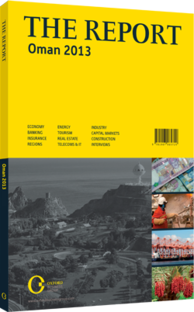Facing the risks: The central bank is seeking to keep personal debt in check as the appetite for credit grows
With the Omani appetite for credit showing some substantial increases in 2011 and early 2012, the Central Bank of Oman (CBO) introduced some important measures to ensure this loan growth stayed within sustainable limits. The results have been good thus far, even if they have obliged banks to adjust and required banking equities to stabilise. The CBO Annual Report for 2011 showed that while total credit had grown 16.7% that year, lending to individuals had risen some 17.3% year-on-year, from OR4.28bn ($11.15bn) to OR5.03bn ($13.1bn). Personal loans accounted for some 40.2% of total credit lending by commercial banks as well, demonstrating the importance of this line of business.
Risky Business
The CBO concluded that this level of growth was a cause for concern as it risked the development of high levels of personal debt nationwide. A January 2011 report had already highlighted some of the downside credit risks. First among these is the concern that, while the level of deposit growth has traditionally outgrown that of credit and the banking system as a whole remains highly liquid, a fall in oil prices could necessitate a withdrawal of deposits from the banking sector by the government to meet the needs of the 2012 budget. In addition, the CBO forecast a likely continuation in demand for loans in 2012, particularly as a number of IPOs were being launched, including those by the two new Islamic banks. A number of further rights issues were also coming to light as conventional banks opened their Islamic windows. Such activities typically result in a surge in borrowing and withdrawals as would-be investors prepare for new equity bids. The CBO also concluded that the growth in personal loans might negatively affect the amount of bank credit available for investment activities, a particular concern in a year when a range of major new investment projects was getting under way.
New Laws
Given these perceived risks, the CBO concluded that two new measures should be put in place. First, in March 2012 the bank announced that it was reducing the interest rate ceiling on personal loans from 8% to 7%, with effect from April 1, 2012. This made personal loans significantly less attractive as a business line to the banks, while also aiming to reduce further accumulation of household debt. A second move was then made in May 2012 to reset the Equated Monthly Instalment (EMI) on any personal loan at no more than 50% of an individual’s monthly salary deposited with the bank.
Conditions For Borrowing
Further conditions were attached in a circular of that month. The repayment period of the personal loan cannot exceed 10 years, though two postponement terms of one month each year are allowed. In addition, there can be no renewal of such loans until 24 months have passed since repayment of the original loan – and then only if repayments have been regularly made. The EMI also includes any credit card and overdraft cheques, but not housing loans; the debt burden ratio for the latter is separately set at 60% of the monthly salary deposited at the bank. A maximum repayment term for housing loans of 25 years has also been set.
The new rules do not apply to loans for business purposes, with the CBO Circular also drawing attention to the need to thoroughly assess potential borrowers. This includes recognition of the age of the applicant so as to avoid excessive debt burdens for those who retire during the loan period.
These regulations have been broadly welcomed by customers and banks, though such a brake on credit growth did have a negative impact on banks’ performance, with share values falling. Still, the sector received a major boost with the roll-out of Islamic banking; competition for credit and deposits is likely to intensify in the months ahead as newcomers seek to gain market share. Additionally, while credit growth has slowed significantly, the second half of 2012 is predicted to be dominated by growth in corporate loans with the roll-out of major government projects.
You have reached the limit of premium articles you can view for free.
Choose from the options below to purchase print or digital editions of our Reports. You can also purchase a website subscription giving you unlimited access to all of our Reports online for 12 months.
If you have already purchased this Report or have a website subscription, please login to continue.

